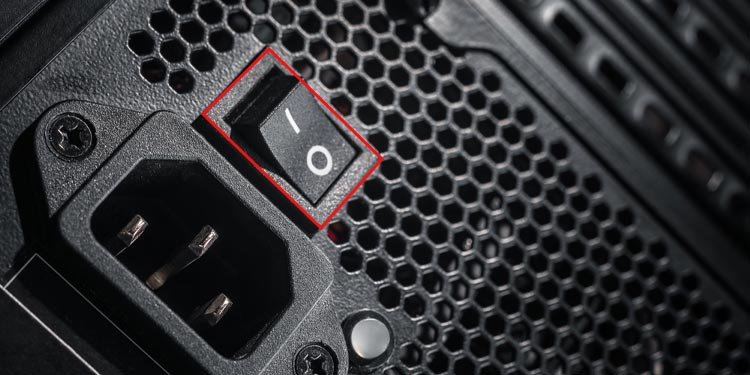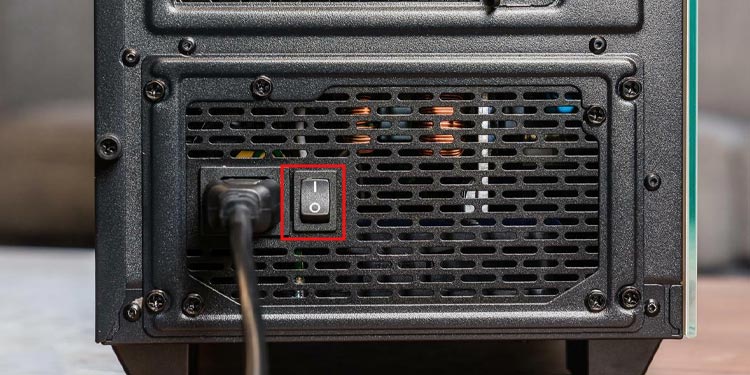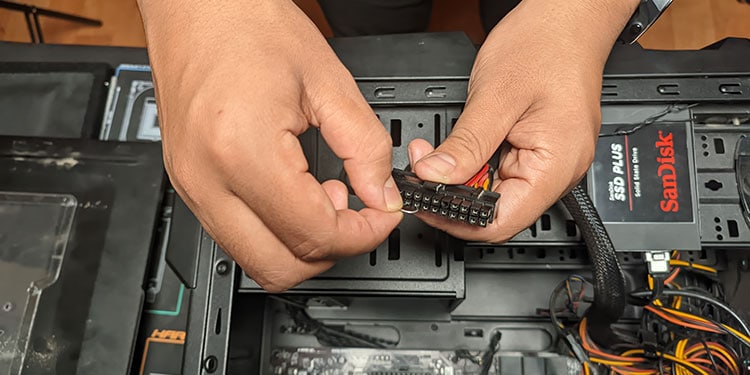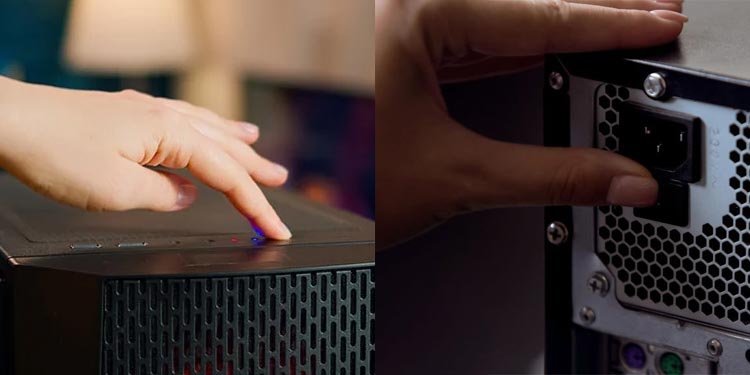Reasons Your Computer Won’t Start
Fixing a Computer That Won’t Start
If your computer won’t start, looking for solutions that are easy to address is the best way to fix it. After all, you don’t want to take everything apart only to find out the power strip died.
The best case scenario is that your power outlet or strip is messed up and needs to be replaced or repaired. If your computer can’t get power from the wall, then it isn’t able to start. Your computer components might not be connected correctly. Over time, certain connections can get loose or dirty and not work. Since many of your components are required for the machine to start successfully, disconnections or mess can stop the entire process from happening.Other devices connected to the computer may have failed and are stopping the computer from completing the startup process. Even if it doesn’t seem like they should affect the computer that way, they absolutely can. One of the devices on your computer may have failed. Sometimes they go out without warning or break when you start the computer. In these cases, you’ll have to replace a PC part to get it going again.
Unfortunately, finding out what the problem is with your computer takes a lot of guesswork. Recently, my computer failed to start because the PSU died; there was no way to start it without replacing the part. But there was no sign the PSU was what died. I had to check other potential causes to be sure it was a hardware issue first.
Double-check Your Monitor
Try plugging in another monitor before you do anything else. Use a different cable and port to connect the new one too. It’s just an easy way to ensure the monitor isn’t the issue.
Check for Power and Connection Issues
First, check to ensure your computer is plugged in. It sounds elementary, but it’s the cause of the computer not powering up more than you might think. Check the plug itself and the switch on the PSU if yours has one. Many power supply units have a power switch on the back that turns off the power at the source. It isn’t the standard power button on the computer but another switch. People generally keep them switched on unless they’re turning off the computer for troubleshooting. Next, try switching to a different outlet and a different power strip. Look for signs that yours are damaged. Some power strips make a sound or have a flashing light that appears or a light that goes out or changes color if the power strip is damaged. If you see that, replace it immediately with a new surge protector. If your outlet is damaged, there may be no signs, but there could be burn marks. Call an electrician if you see these and use a different outlet for your computer. Damaged outlets are a fire hazard and could damage your PC even if they don’t start a fire. One good way to test whether your power strip is damaged is to plug the computer directly into a wall outlet. First, try the wall outlet with another device to ensure it’s working. You can plug in something like a clock to see if it works right away.
Listen to the Computer
Sometimes the startup process begins but won’t finish, and the only sign might be a sound signal. Try to hear whether the fans are starting, the motherboard is beeping, or there’s no movement. If the motherboard shows a code or makes a series of beeps, you can use that to determine why it won’t turn on. Beep codes alert users to problems with the startup process and computer. You can find the codes in your motherboard manual and use them to figure out what might be wrong. You should also read through the motherboard manual and ensure everything that should be plugged in is connected, especially if it’s a new computer build. This isn’t as necessary if it isn’t a new build and it worked before.
Reset CMOS
You can remove the CMOS battery in the motherboard to reset BIOS. The way you do this depends on what motherboard you have. Some have a button you can use to clear the CMOS. Others require you to pop the clip, remove the CMOS battery, press the power button on the PC for 30 seconds, replace the battery, and restart the computer. Some users have been able to fix their computers by simply performing this reset.
Check the PSU
Next, try replacing the PSU power cable. You need one that is compatible with your PSU. If it still doesn’t work, your next best bet is to test the PSU. Doing this before taking apart the computer and putting it back together to check the other hardware and connections. It may seem tricky initially, but it isn’t that hard to test yourself. If you have a PSU jumper or multimeter, you can use that to test the PSU instead. If there’s no movement or sound from the PSU, then it probably isn’t working. You will have to replace it to make the computer work again. If it does kick in, it’s time to check out what else might be wrong inside the machine.
Reconnect Everything
This step is a bit tedious, but it’s worth your time so that you don’t replace a non-faulty part. Sometimes a computer turns off and won’t turn back on because the connections aren’t stable or the machine isn’t clean enough. It can happen without warning, and moving things around might fix it without spending money to replace various parts. Clean it and reconnect everything as if you’re building a new computer. (The only part I wouldn’t recommend removing at this point is the CPU.) If you have extra components lying around, try connecting them to the computer one-by-one. For example, replace the CPU fan to see whether it switches on with the new one plugged in. If it does, you know the issue is the motherboard or CPU at this point. If it still isn’t coming on, you probably need to start checking various components or seek professional help from a certified repair technician.














title: “Why Won T My Computer Power Up How To Fix It” ShowToc: true date: “2022-11-08” author: “Marilyn Randolph”
Reasons Your Computer Won’t Start
Fixing a Computer That Won’t Start
If your computer won’t start, looking for solutions that are easy to address is the best way to fix it. After all, you don’t want to take everything apart only to find out the power strip died.
The best case scenario is that your power outlet or strip is messed up and needs to be replaced or repaired. If your computer can’t get power from the wall, then it isn’t able to start. Your computer components might not be connected correctly. Over time, certain connections can get loose or dirty and not work. Since many of your components are required for the machine to start successfully, disconnections or mess can stop the entire process from happening.Other devices connected to the computer may have failed and are stopping the computer from completing the startup process. Even if it doesn’t seem like they should affect the computer that way, they absolutely can. One of the devices on your computer may have failed. Sometimes they go out without warning or break when you start the computer. In these cases, you’ll have to replace a PC part to get it going again.
Unfortunately, finding out what the problem is with your computer takes a lot of guesswork. Recently, my computer failed to start because the PSU died; there was no way to start it without replacing the part. But there was no sign the PSU was what died. I had to check other potential causes to be sure it was a hardware issue first.
Double-check Your Monitor
Try plugging in another monitor before you do anything else. Use a different cable and port to connect the new one too. It’s just an easy way to ensure the monitor isn’t the issue.
Check for Power and Connection Issues
First, check to ensure your computer is plugged in. It sounds elementary, but it’s the cause of the computer not powering up more than you might think. Check the plug itself and the switch on the PSU if yours has one. Many power supply units have a power switch on the back that turns off the power at the source. It isn’t the standard power button on the computer but another switch. People generally keep them switched on unless they’re turning off the computer for troubleshooting. Next, try switching to a different outlet and a different power strip. Look for signs that yours are damaged. Some power strips make a sound or have a flashing light that appears or a light that goes out or changes color if the power strip is damaged. If you see that, replace it immediately with a new surge protector. If your outlet is damaged, there may be no signs, but there could be burn marks. Call an electrician if you see these and use a different outlet for your computer. Damaged outlets are a fire hazard and could damage your PC even if they don’t start a fire. One good way to test whether your power strip is damaged is to plug the computer directly into a wall outlet. First, try the wall outlet with another device to ensure it’s working. You can plug in something like a clock to see if it works right away.
Listen to the Computer
Sometimes the startup process begins but won’t finish, and the only sign might be a sound signal. Try to hear whether the fans are starting, the motherboard is beeping, or there’s no movement. If the motherboard shows a code or makes a series of beeps, you can use that to determine why it won’t turn on. Beep codes alert users to problems with the startup process and computer. You can find the codes in your motherboard manual and use them to figure out what might be wrong. You should also read through the motherboard manual and ensure everything that should be plugged in is connected, especially if it’s a new computer build. This isn’t as necessary if it isn’t a new build and it worked before.
Reset CMOS
You can remove the CMOS battery in the motherboard to reset BIOS. The way you do this depends on what motherboard you have. Some have a button you can use to clear the CMOS. Others require you to pop the clip, remove the CMOS battery, press the power button on the PC for 30 seconds, replace the battery, and restart the computer. Some users have been able to fix their computers by simply performing this reset.
Check the PSU
Next, try replacing the PSU power cable. You need one that is compatible with your PSU. If it still doesn’t work, your next best bet is to test the PSU. Doing this before taking apart the computer and putting it back together to check the other hardware and connections. It may seem tricky initially, but it isn’t that hard to test yourself. If you have a PSU jumper or multimeter, you can use that to test the PSU instead. If there’s no movement or sound from the PSU, then it probably isn’t working. You will have to replace it to make the computer work again. If it does kick in, it’s time to check out what else might be wrong inside the machine.
Reconnect Everything
This step is a bit tedious, but it’s worth your time so that you don’t replace a non-faulty part. Sometimes a computer turns off and won’t turn back on because the connections aren’t stable or the machine isn’t clean enough. It can happen without warning, and moving things around might fix it without spending money to replace various parts. Clean it and reconnect everything as if you’re building a new computer. (The only part I wouldn’t recommend removing at this point is the CPU.) If you have extra components lying around, try connecting them to the computer one-by-one. For example, replace the CPU fan to see whether it switches on with the new one plugged in. If it does, you know the issue is the motherboard or CPU at this point. If it still isn’t coming on, you probably need to start checking various components or seek professional help from a certified repair technician.













